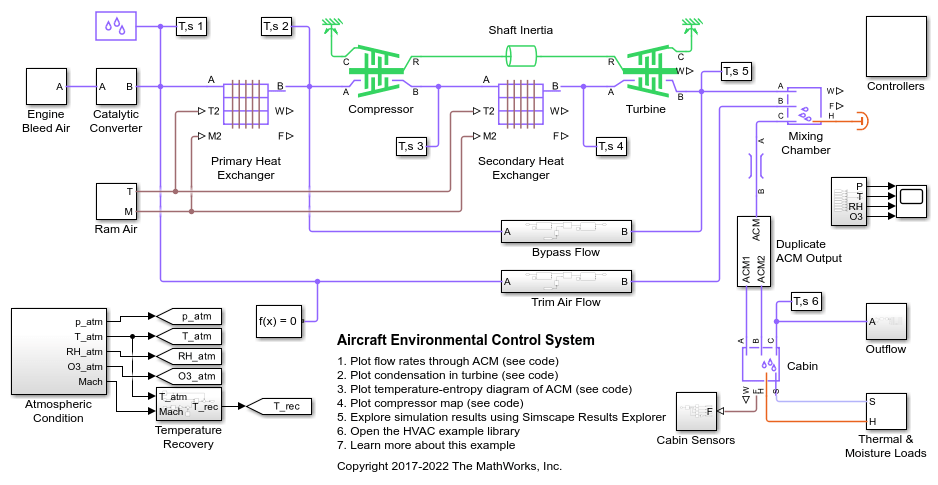Pressure & Temperature Sensor (MA)
Measure pressure and temperature in moist air networks
Libraries:
Simscape /
Foundation Library /
Moist Air /
Sensors
Description
The Pressure & Temperature Sensor (MA) block represents an ideal sensor that measures pressure and temperature in a moist air network. There is no mass or energy flow through the sensor.
The sensor contains an implicit reference node, which means that you need only one port, port A, to make absolute measurements of pressure or temperature. Expose the second port, port B, only if you need to measure the difference in pressure or temperature between two nodes in the model. The measurements are positive when the values at port A are greater than the values at port B.
Temperature measurements are different from pressure measurements, because the energy flow rate depends on the flow direction. The temperature measurement represents the temperature upstream of the measured node. For example, if port A of the Pressure & Temperature Sensor (MA) is connected to a node between pipe 1 and pipe 2 and the moist air flows from pipe 1 to pipe 2, then the temperature measured at port A is the temperature of the moist air volume in pipe 1. If the air flow then switches direction and flows from pipe 2 to pipe 1, then the temperature measured at port A is the temperature of the moist air volume in pipe 2. If the temperatures of the two moist air volumes are different, then the measured temperature changes when the flow direction switches. If there are two or more upstream flow paths merging at the node, then the temperature measurement at the node represents the weighted average based on the ideal mixing of the merging flow.
Four physical signal ports are available to output the measurement data:
Port Pa outputs the absolute pressure.
Port Pg outputs the gauge pressure.
Port P outputs the pressure difference across the sensor.
Port T outputs the temperature.
These ports have conditional port visibility on the block icon. Use the block parameters to expose only the ports that you need for measurements in a particular model.
Connect the measurement ports to PS-Simulink Converter blocks to transform the output physical signals into Simulink® signals, for example, for plotting or additional data processing.


